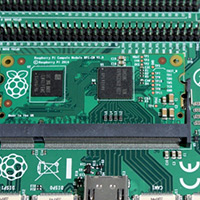

Understanding Solar Control Low-E Glass
In today's environmentally-conscious society, the quest for energy efficiency has become paramount. One of the innovative solutions that have emerged in the realm of architecture and building materials is solar control low-emissivity (Low-E) glass. This specialized type of glass plays a crucial role in improving energy efficiency while enhancing comfort in residential and commercial buildings. In this article, we will explore what solar control Low-E glass is, how it works, its benefits, and its applications in the modern construction world.
What is Solar Control Low-E Glass?
Low-E glass refers to glass that has been coated with a thin layer of metallic oxide. This coating significantly reduces the amount of ultraviolet (UV) and infrared (IR) light that can pass through the glass without compromising the visible light that enters a building. Solar control Low-E glass is specifically designed to reflect solar energy away from the building, minimizing heat gain during the hotter months while allowing beneficial day lighting to enhance the indoor ambiance.
How Does Solar Control Low-E Glass Work?
The key to the effectiveness of solar control Low-E glass lies in its unique coating. Typically applied to one surface of the glass, this layer is engineered to have specific optical properties. The coating reflects a significant portion of the solar radiation while allowing a balanced level of visible light to penetrate. The result is a comfortable indoor environment that is cooler during summer months and retains heat during winter.
When sunlight strikes the glass, the Low-E coating reacts in several ways. First, it reflects the sunlight that would otherwise heat up the interior of the space. This is particularly beneficial in hotter climates, where reducing heat buildup can decrease the need for air conditioning, thus saving energy and lowering utility bills. In colder regions, while the primary function is to reflect interior heat back indoors, the glass also minimizes heat loss, maintaining a more consistent temperature.
Benefits of Solar Control Low-E Glass
1. Energy Efficiency One of the most significant advantages of solar control Low-E glass is its energy-saving potential. Buildings that incorporate this type of glass often experience lower energy consumption for heating and cooling, contributing to reduced operational costs.

2. Comfort By regulating indoor temperatures, Low-E glass enhances comfort levels for occupants. Without excessive heat gain, spaces remain cooler and more pleasant during hot weather, which can enhance productivity in work environments.
3. UV Protection The UV-blocking properties of solar control Low-E glass safeguard interior furnishings, carpets, and artwork from fading, allowing them to maintain their appearance over time. This is particularly valuable for retail spaces or homes with valuable possessions.
4. Sustainability Utilizing solar control Low-E glass contributes to sustainability goals. By reducing energy consumption, buildings can lower their carbon footprint, making them more environmentally friendly.
5. Aesthetic Versatility Available in various tints and styles, solar control Low-E glass can be tailored to fit the aesthetic needs of a building without compromising functionality. This versatility makes it an attractive choice for architects and builders.
Applications of Solar Control Low-E Glass
Solar control Low-E glass can be used in a variety of applications across different sectors. In residential construction, it is commonly used in windows and patio doors to enhance home comfort and efficiency. In commercial settings, it is ideal for facades and curtain walls, allowing skyscrapers to utilize natural light while effectively managing solar heat gain.
Moreover, this type of glass is not limited to new constructions; it can also be retrofitted into existing buildings, providing an upgrade to improve energy performance and occupant satisfaction.
Conclusion
In conclusion, solar control Low-E glass represents a significant advancement in building materials, offering a combination of energy efficiency, comfort, and aesthetic appeal. As the demand for sustainable construction practices continues to rise, the integration of solar control Low-E glass stands out as a forward-thinking solution. By understanding its properties and benefits, architects, builders, and homeowners can make informed decisions that contribute to a more sustainable future while enjoying enhanced comfort in their indoor environments. Whether for new construction or retrofitting existing buildings, solar control Low-E glass is a wise investment for anyone looking to improve energy efficiency and overall quality of life.